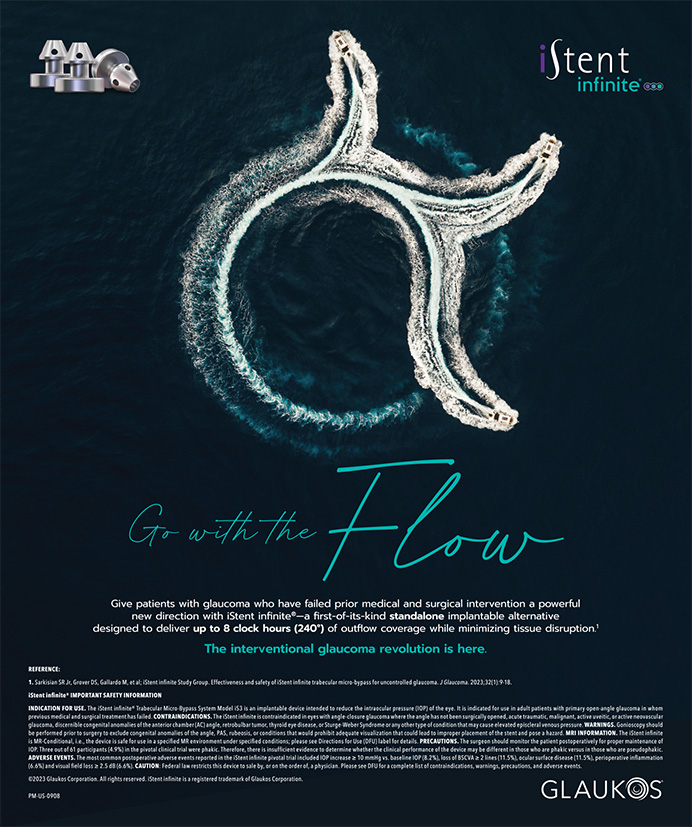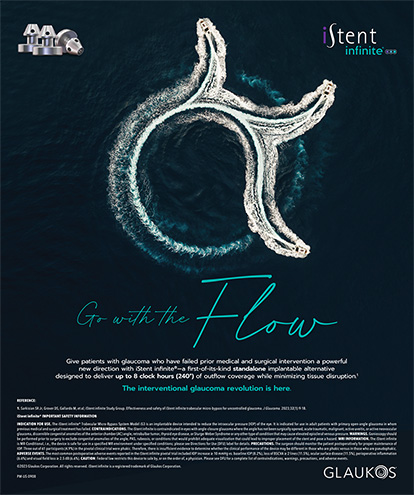When my surgical team and I work to improve the efficiency of cataract surgery, safety is actually the primary concern. Many of the steps that we incorporate purely for safety may add time or cost to the procedure, but they will prove to increase efficiency in the long run.
With that in mind, here are 11 tips and tricks to improve safety and efficiency in the OR.
No. 1. Tessalon Pereles (benzonatate; Forest Labs). This may not be the greatest accomplishment ever to grace the OR, but it will stop, or at least reduce, severe coughing. I compared a surgery in which coughing interfered with the procedure with one that used the Tessalon Pereles; it was clearly effective in my hands.
No. 2. A team. For a small staff operating in an ambulatory surgery center, this is intuitive, but details get lost in translation with larger, less-cohesive working groups. Every person who will interact with a patient should be considered part of the team. The better informed each team member becomes, the fewer details will be lost in translation.
No. 3. No second-guessing in the OR. The surgical plan (ie, the site of surgery, IOL model, IOL power, astigmatic correction, etc.) should be created in the office. The (special) equipment needed should be confirmed prior to the patient’s arrival for surgery, not after (see tip No. 2). Adjustments to the plan are appropriate for various circumstances, but constantly replanning the surgery will not improve its efficiency.
No. 4. The Dewey Radius Phaco Tip (MicroSurgical Technology, Redmond, WA). Any capsule can break at any time. The rounded edges of this needle are very forgiving, however, and incidental contact of the needle tip with the iris or capsule is usually uneventful.
No. 5. Whitestar Signature System 2.0 with the Ellips FX handpiece (Abbott Medical Optics Inc., Santa Ana, CA) and venturi vacuum. The Ellips FX has surprised me with regard to its efficient nuclear removal. The chamber remains remarkably stable, and the benefits of less intraocular trauma translate into faster visual recovery for patients. This pays off well after the patient leaves the OR.
No. 6. Horizontal chop with a Goldberg Side Port Nucleus Splitter (Rhein Medical, Inc., St. Petersburg, FL). This instrument seems large to most surgeons, but the “throw” of the instrument makes it useful for cataracts of any density. More importantly, it has no sharp surfaces.
No. 7. Two rooms—or at least a sterile room to begin the next case in advance. From a personnel standpoint, the operating surgeon’s time is the single most expensive item in the OR. The occupancy of the OR itself, however, is more expensive. When I move between two rooms, my day is much smoother and my downtime minimized. For setups where two rooms are impractical, a sterile room for opening the next case will suffice.
No. 8. Intracameral dilation. This step improves the patient’s experience by reducing the burden of preoperative drops and the lead time to get him or her to the OR. More importantly, intracameral dilation delivers the medication directly to the targeted tissue for maximum effectiveness.
No. 9. Dispersive viscoelastic on the cornea. When applied with water, a dispersive viscoelastic can form a clear barrier that eliminates the need for corneal irrigation.
No. 10. J-cannula irrigation for cortical removal. It takes 20 seconds on average to remove all of the remaing cortex using this technique—about as fast as my staff can convert to the I/A handpiece.
No. 11. Frequent review. Whether analyzing one’s surgical technique or the processes in and around the OR, it helps to take a step back and re-evaluate.


